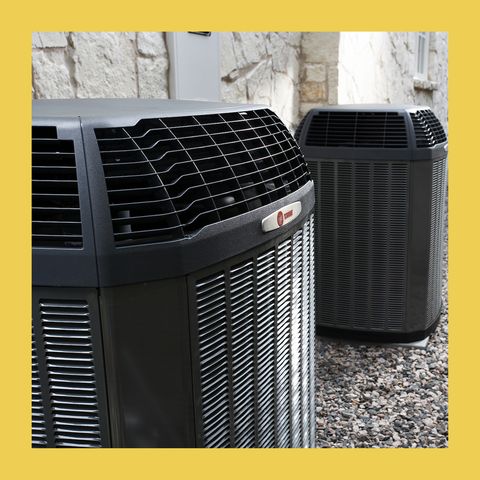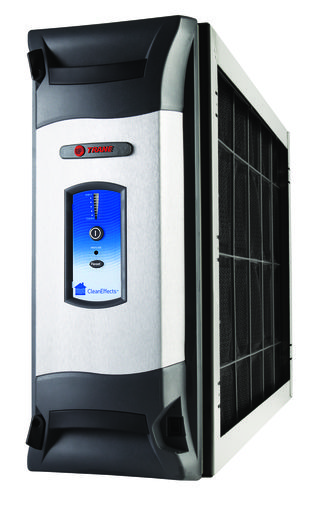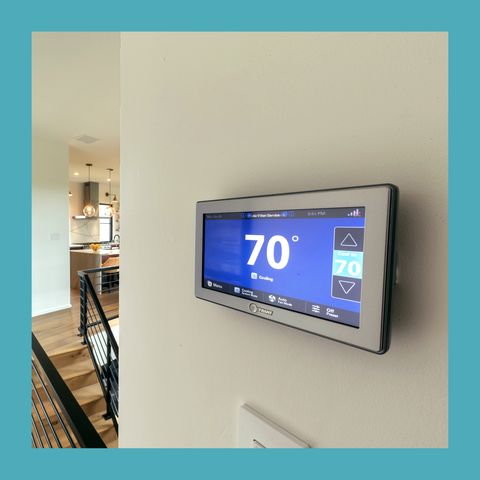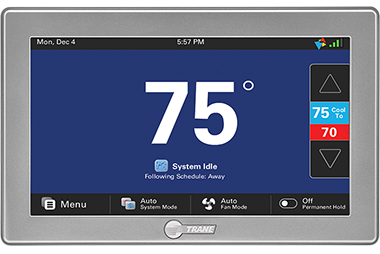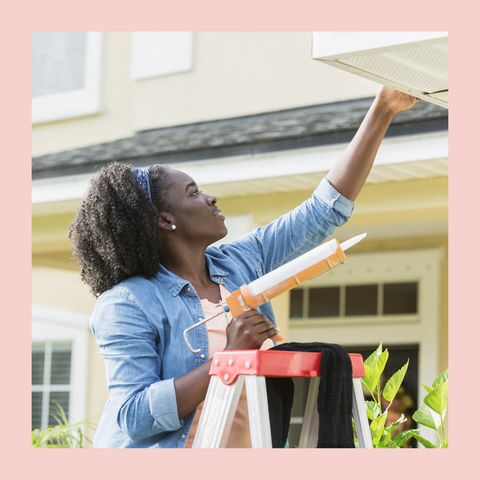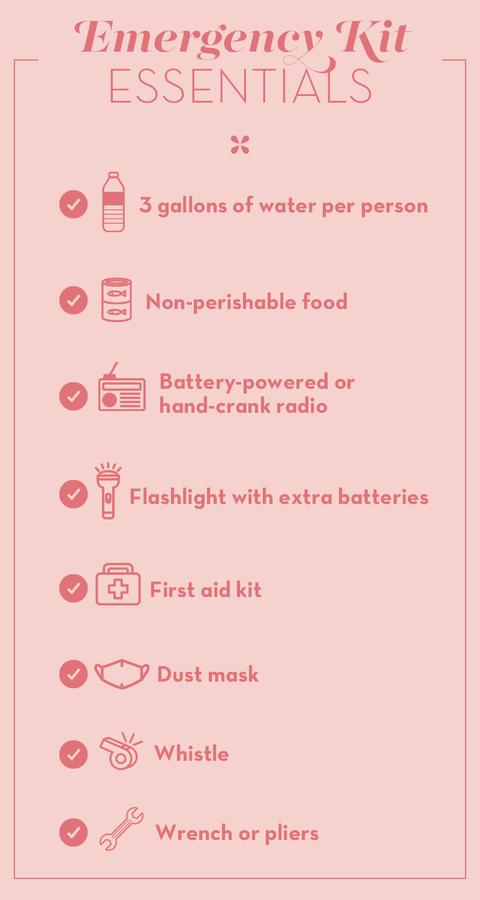[ad_1]
Summer is a time to enjoy your home, not sweat over it. And you’ll be able to do just that if you take care of preventative maintenance ahead of the hot, humid days to come.
To find out what upkeep should top your early summer to-do list, we checked in with the home experts at the Good Housekeeping Institute. “Between the soaring temperatures and uptick in extreme weather, your home might have to work a lot harder this summer,” says Rachel Rothman, the institute’s chief technologist. “Plus, you want to make sure all major systems are in order before heading off on any long holidays.”
We also tapped industry experts at Trane Residential, which makes many top-rated cooling and heating products designed to maintain year-round comfort at home, on how to prepare for the hottest days of the year.
Take Care of Cooling Equipment
If you have central AC, “the number one thing you need to do is change the filter regularly,” says Darcy Lee, senior product manager at Trane. Not only does a dirty filter send dust, dander and other pollutants into the home, it puts added stress on the unit, increasing the chances of it conking out on the hottest day of the year. Lee recommends replacing the filter at least every 90 days and more often during periods when there’s a lot of pollen and mold in the air.
You should also consider upgrading your filter from the standard 1” thick variety to an advanced filter, sometimes referred to as a whole-house air filtration system. Trane CleanEffects, for example, claims to be 100 times more effective than a typical resuable filter, thanks to its patented technology that traps 99.98% of airborne particles.
It’s also important to have your central AC system professionally serviced at least once a year. A capable technician will do a range of maintenance tasks that are beyond the skill set of an average homeowner, like checking refrigerant levels and making sure the coil has enough charge. The annual tune-up will likely cost between $100 and $300, but it will maintain peak performance and efficiency while also extending the life of the equipment by several years or more.
Do you have window ACs in your home? They have filters, too. Remove and clean them with soapy water a couple times throughout the cooling season.
Check the Temperature
If you haven’t yet made the switch to a smart thermostat, now’s the time to do it. By automatically adjusting your home’s temperature when you’re asleep or away, the WiFi-connected devices can lower your cooling costs by as much as 10 percent, according to the U.S. Department of Energy.
The latest advanced thermostats, like Trane’s ComfortLink II XL1050, can even send real-time information to your service provider (with your permission, of course), allowing them to monitor the overall health of your equipment. For example, the technician might notice that your central AC is running longer than normal, which could be an early signal of an issue with its mechanics. In that scenario, a simple repair could avoid a sudden failure.
Keep Humidity and Air Pollutants in Check
As moisture in the air rises, it creates the ideal conditions for dust mites, mold, and other allergens in your home. You want to keep humidity levels in your home below 60 percent, ideally between 30 and 50 percent, according to the U.S. Environmental Protection Agency.
A stand-alone dehumidifier can help lower moisture levels in a specific area, like a damp basement. If you live in a very humid region, or there are allergy sufferers in the home, it’s worth considering a whole-house dehumidifier, which can be tied into an existing forced-air heating and cooling system or installed independently.
Those in drier climates might need to add a little more moisture in the air with a humidifier, either for the whole house or by room. That will help prevent dry eyes and scratchy throats, as well as cracked furniture and hardwood floors.
Be Prepared for Extreme Weather
Whether you live in hurricane country or tornado alley, summer is high time for storms. Backup power is essential since extreme weather is often followed by blackouts. Installing a backup generator, whether standby or portable, is the best defense against prolonged outages.
It’s also important to check that your home’s gutter system is in good working order so it can properly channel heavy rains away from the house. Inspect gutters for clogs and signs of rust or corrosion, as well as places where they’re pulling away from the house.
Finally, since storms can strike unexpectedly, FEMA advises that every home should have an emergency kit with 72 hours’ worth of supplies. The kit should include water (3 gallons per person), non-perishable food, a battery-powered or hand crank radio, a flashlight with extra batteries, a first-aid kit, dust masks, a whistle to signal for help, and a wrench or pliers to turn off utilities.
Be on the Lookout for Pests
Summer is the season for termites and carpenter ants. Both love moist soil, which is another reason to keep your gutters in working order. The pests are also attracted to rotting wood, so be sure to keep mulch, firewood, and dense shrubbery away from your home’s foundation.
If you think the pests might have already found their way inside, look for piles of sawdust along baseboards—a telltale sign of carpenter ants. Termites, meanwhile, like to shed their wings along windowsills, walls, and other entry points.
Last but not least: mosquitoes and ticks. In both cases, the key is to eliminate the insects’ preferred breeding grounds. Mosquitoes need standing water, so watch out for birdbaths, empty gardening pots, and the like. Ticks thrive in tall grass, so mow the lawn regularly, especially in shady parts of the yard. Then kick back and enjoy a lazy summer afternoon, knowing all is right at home.
This content is created and maintained by a third party, and imported onto this page to help users provide their email addresses. You may be able to find more information about this and similar content at piano.io
[ad_2]
Source link

